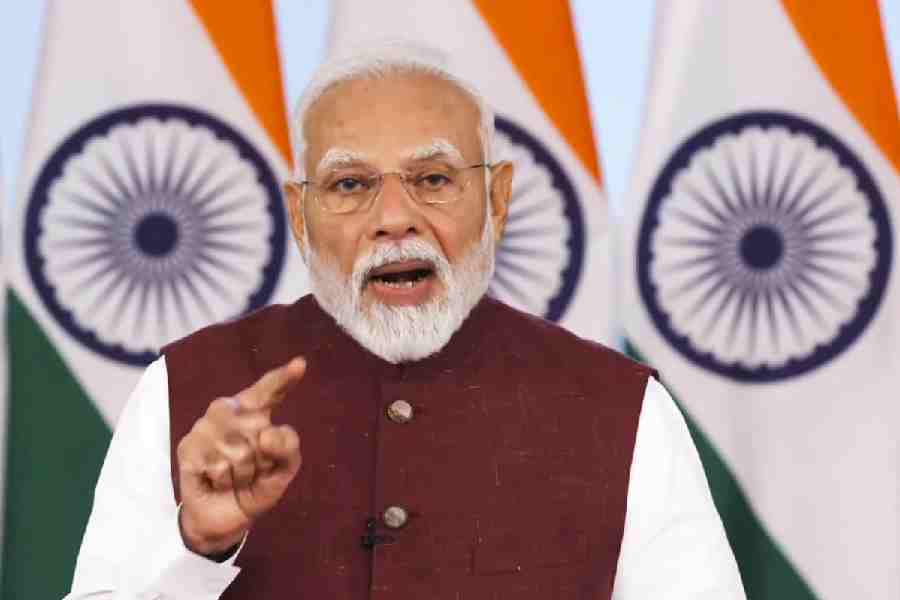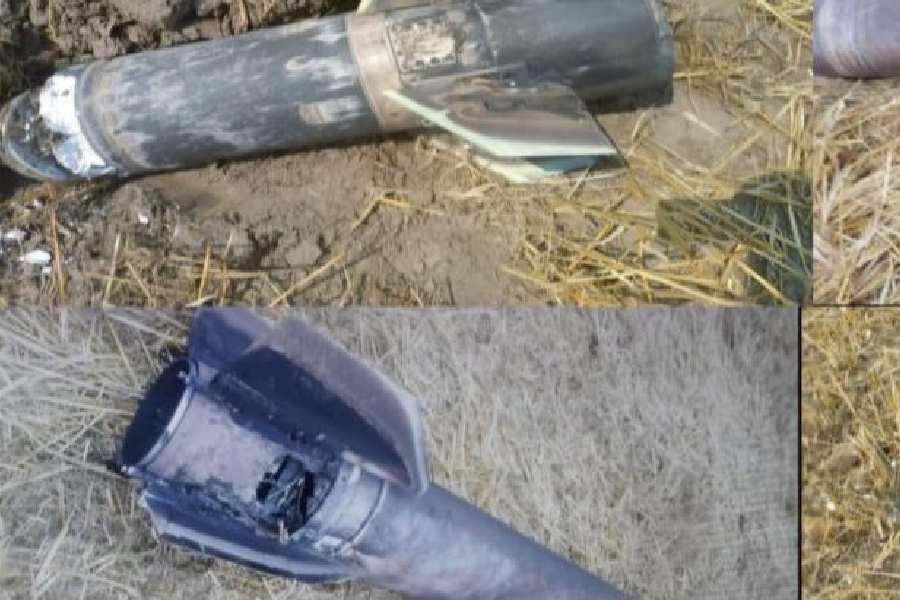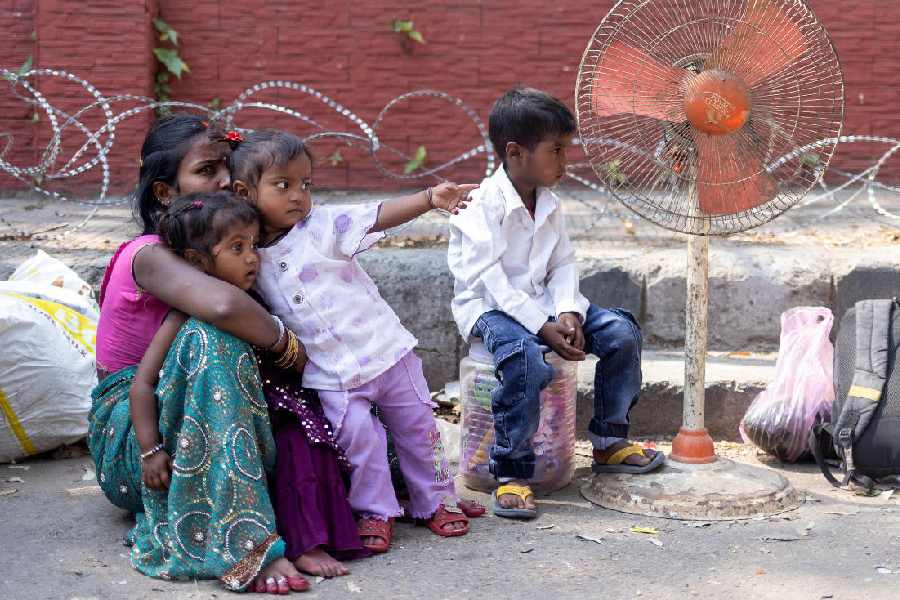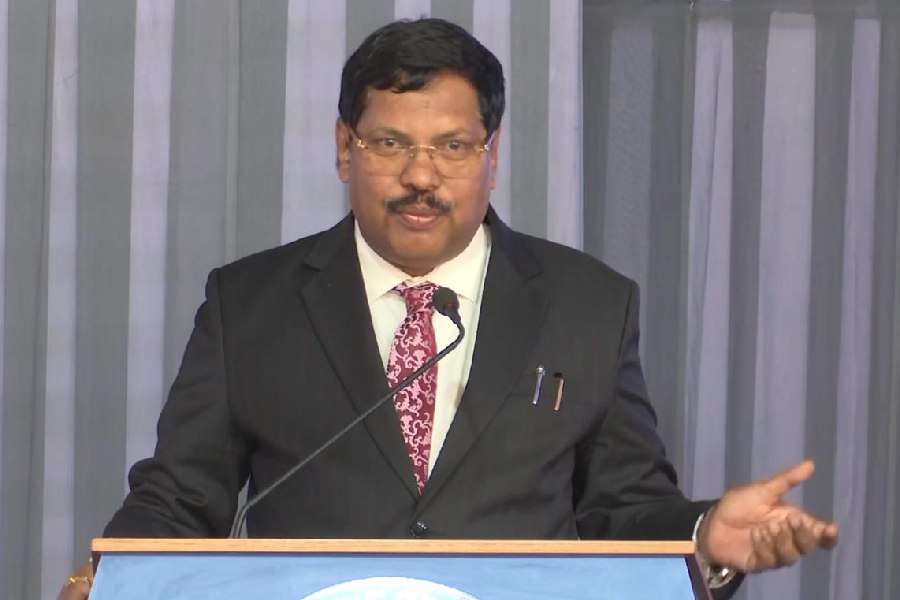Calcutta seems backdated, even archaic, to the casual observer because changes here are not as obvious as in other Indian metros. Yet Calcutta has changed, and is changing, constantly. Many of the changes are underneath the surface, inside the city’s mindscape. The ripples and reflections of these changes may not be obvious. Because Calcutta, like India, lives at many levels, some not even conscious of the others.
The Bengali film industry has been such an arena of change over the past two decades. Perhaps even the cognoscenti would not be able to tell you off-hand the name of the most successful Bengali film in the watershed year of 1977, when the Left Front came into power with a huge majority.
The film is Joy Baba Taraknath and is a benchmark that points to the paradigm shift I am referring to. It is ironic that in the very year in which the people of West Bengal voted the Marxists into power, they also popularised a film in which a scientist is saved from snake venom not by medication but by drinking holy water from the Shiva temple at Tarakeswar. So much for scientific socialism!
The urban middle-class milieu of Bengali cinema, epitomised in Uttam-Suchitra, had gone. The death of Uttam Kumar and Suchitra Sen’s retirement were symptomatic. Commercial cinema would never be the same again.
Bengali films had languished for a long time under the colonisation of its audience by Bollywood. But all of a sudden, the industry seemed to have shaken itself up and gone in search of an audience that always existed, but was studiously ignored. This was the rural audience, which largely satisfied its needs for entertainment from travelling jatra troupes. Joy Baba Taraknath reached out to them on their terms, and they responded enthusiastically.
Beder Meye Josna, a remake of a popular Bangladeshi folk-tale film, proved that the phenomenon was not a flash in the pan. Across the border, the genre had firmly established itself once jatra died out. Besides, the middle-class audience there was not large enough to support Tollywood-type genres.
Beder Meye Josna broke all existing records of how much money a Bengali film could make. This opened the floodgates for Bangladeshi remakes, which did not succeed. The tired Dhaka masala films that followed in its wake could not match the novelty of Beder Meye Josna.
The Dhaka-Calcutta symbiosis lent itself later to a kind of crossover film that is quite an example of how popular culture translates beyond borders. Two principal architects of such trans-border films are director Swapan Saha and actor Razzak. Both have interesting and diametrically opposite personal histories. Swapan Saha left his rather undistinguished film career in Dhaka to find success in Calcutta. Razzak tried hard to gain foothold as an actor in Tollygunge during the late-50s, was rejected outright and went on to become a Dhaka matinee idol. Incidentally, among the films that made him a star is a Dhaka remake of the Sarat Chandra Chattopadhyay story Biraj Bou.
In the 90s, Razzak returned to Tollygunge to prove a point and to create a series of hits as a character actor, modelling himself after Chhabi Biswas of old Tollywood. The nature of the crossover films is indicated in their names — Baba Kyano Chakor, Shaami Kyano Aashami… (according to a Tollywood wisecrack, its logical conclusion is Shoshoor Kyano Oshoor).
A series of films of this genre made significant money, and the formula came to be accepted as the Tollywood mantra for success. At a time when the film industry was in the doldrums and Bollywood was unable to provide anything of consequence, these were the films that kept it afloat.
If you choose to look down upon them, you are obviously not concerned about the survival of the film industry. And without a thriving industry, you would be deprived of your occasional flash of art from Buddhadeb Dasgupta, Goutam Ghose, Rituparno Ghosh, Aparna Sen, Nabyendu Chatterjee, Ashok Vishwanathan…
When my sophisticated friends ask me what happened to Bangla films, I wonder if they are really concerned. The question I would like them to ask themselves is how many times have they gone to see a Bengali film, or to put it differently, what is their contribution to the Rs 50-crore-plus Bengali film industry in the last financial year?
I think their answers would tell them what actually has happened to Bengali cinema. With its erstwhile middle-class audience wooed away by television, it has been left to satisfy a rural and working-class audience. This is an audience where Bollywood was never a major competitor, because a large part of it does not understand Hindi at all.
 |
 |
| HIT PARADE: Tarun Majumdar directs Rituparna Sengupta in Aalo (top) and Jeet and Priyanka Trivedi in Saathi. |
The market for Bengali cinema exists largely outside Calcutta. If you really wish to have a feel of its audience, catch a family drama in one of the city theatres close to railway stations, like Prachi near Sealdah, or Aleya near Ballygunge.The Bengali film industry is in the middle of a success wave. Its superstars, like Prosenjit or Rituparna Sengupta, are demanding wages their predecessors would never have dared dream of. Its successful directors are planning mega movies in Cinemascope, with Dolby Sound and big action sequences. Film after film has been making money enough to get a Subhash Ghai or a TLV Prasad interested. Victory scores have been notched up one after another - from Saathi to Shobuj Saathi, from Mayer Aanchol to Poribaar.
If you ask any of the top stars for dates, they will probably push you towards the end of 2005, or even 2006. Star value has been bestowed on directors such as Haranath Chakraborty, Swapan Saha or Anup Sengupta.
As Aparna Sen pointed out to me rather significantly, this has also created the climate for the success of films that retain a modicum of good taste and artistry in commercially packaged films like Bombaiyer Bombetey or Tarun Mazumdar’s Aalo.
I do not know if Calcutta will ever be the promised Kollolini Tillottoma, but when I look at the film industry I see change in the air. I see energy and enthusiasm. These are expressions I have not seen in a long time anywhere in the city.
The results may not always please you culturally, or make you artistically proud, but facts are facts, just as money is money. No wonder FICCI is organising seminars in the city about how to corporatise film production. Bengali cinema today is market-driven, and if a market for your kind of cinema can be created, it will certainly deliver your kind of cinema.
The time to mope over the past is over. The time is ripe to take the bull by its horns.









